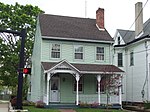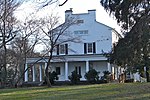WVUD
1976 establishments in DelawareCollege radio stations in DelawareHD Radio stationsRadio stations established in 1976Radio stations in Delaware ... and 1 more
University of Delaware
WVUD (91.3 FM) is a non-commercial educational FM radio station owned by University of Delaware and licensed to serve Newark, Delaware. The station is student-run and broadcasts a freeform format. Studios are located in the Perkins student center at the University of Delaware and the transmitting antenna is located on the top of the Christiana East Tower residence building.WVUD uses HD Radio and broadcasts freeform programming on its HD2 subchannel branded as "The Basement".On May 8, 2017, three veterans of WVUD were enshrined in its Hall of Fame. Ellen Ellis, Dr. Gloria James and Michael Tsarouhas were the three inductees for 2017.
Excerpt from the Wikipedia article WVUD (License: CC BY-SA 3.0, Authors).WVUD
New London Road, Newark
Geographical coordinates (GPS) Address Nearby Places Show on map
Geographical coordinates (GPS)
| Latitude | Longitude |
|---|---|
| N 39.690666666667 ° | E -75.756055555556 ° |
Address
University of Delaware - North Campus (Laird Campus)
New London Road
19711 Newark
Delaware, United States
Open on Google Maps











